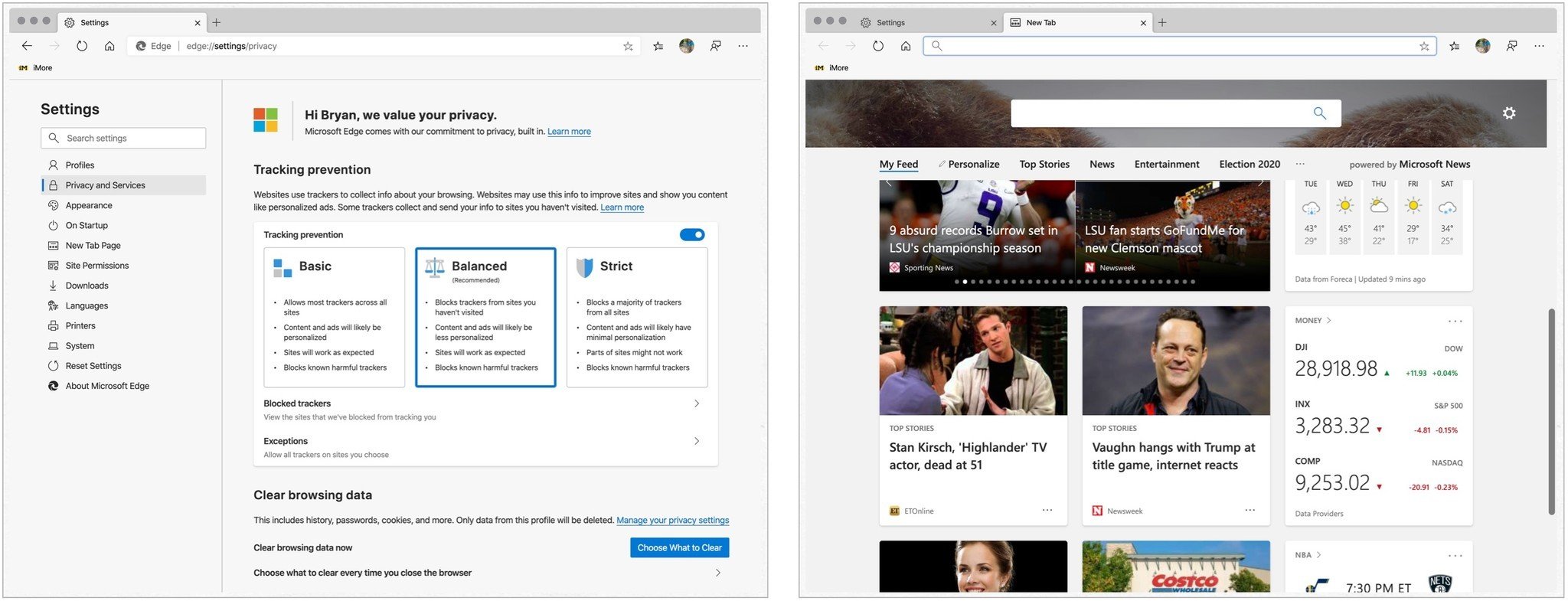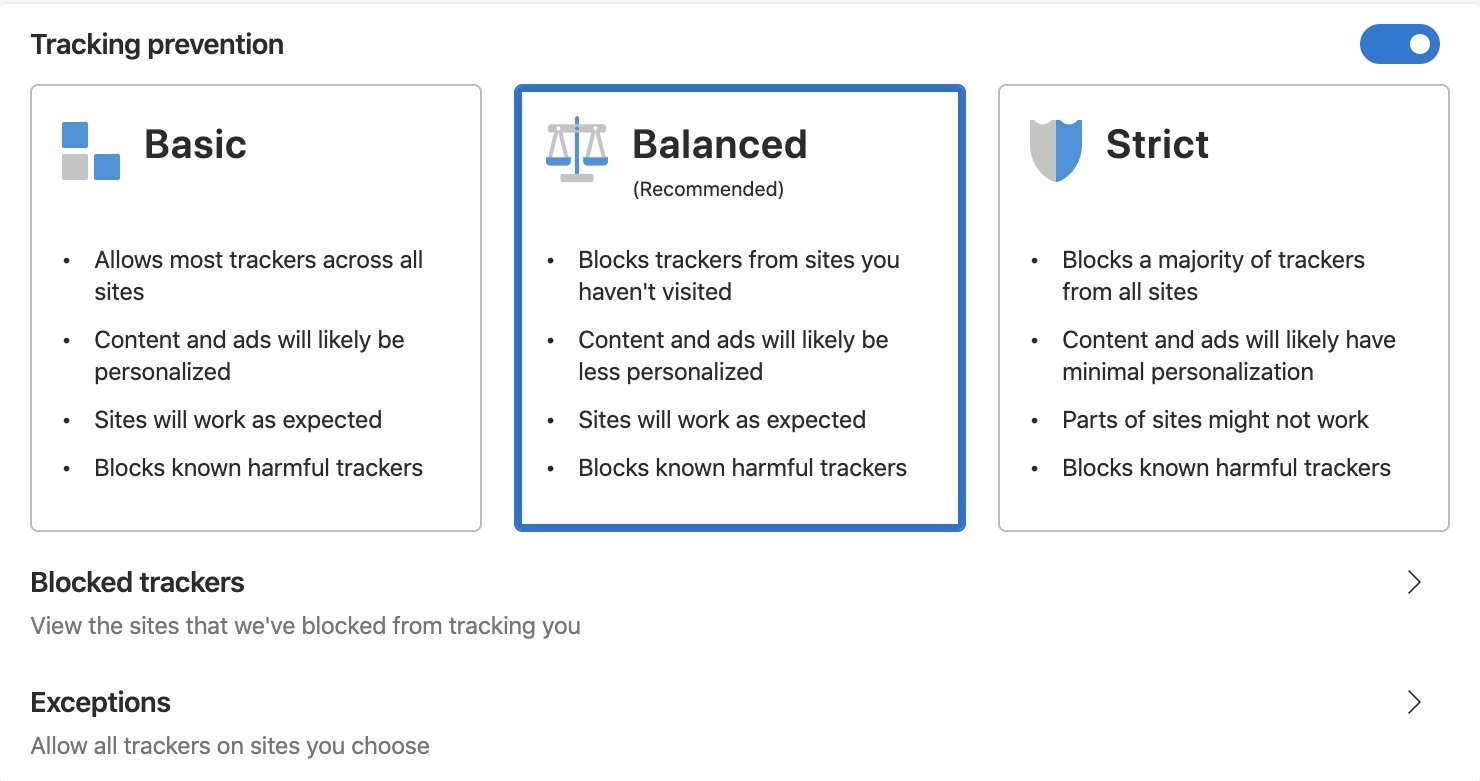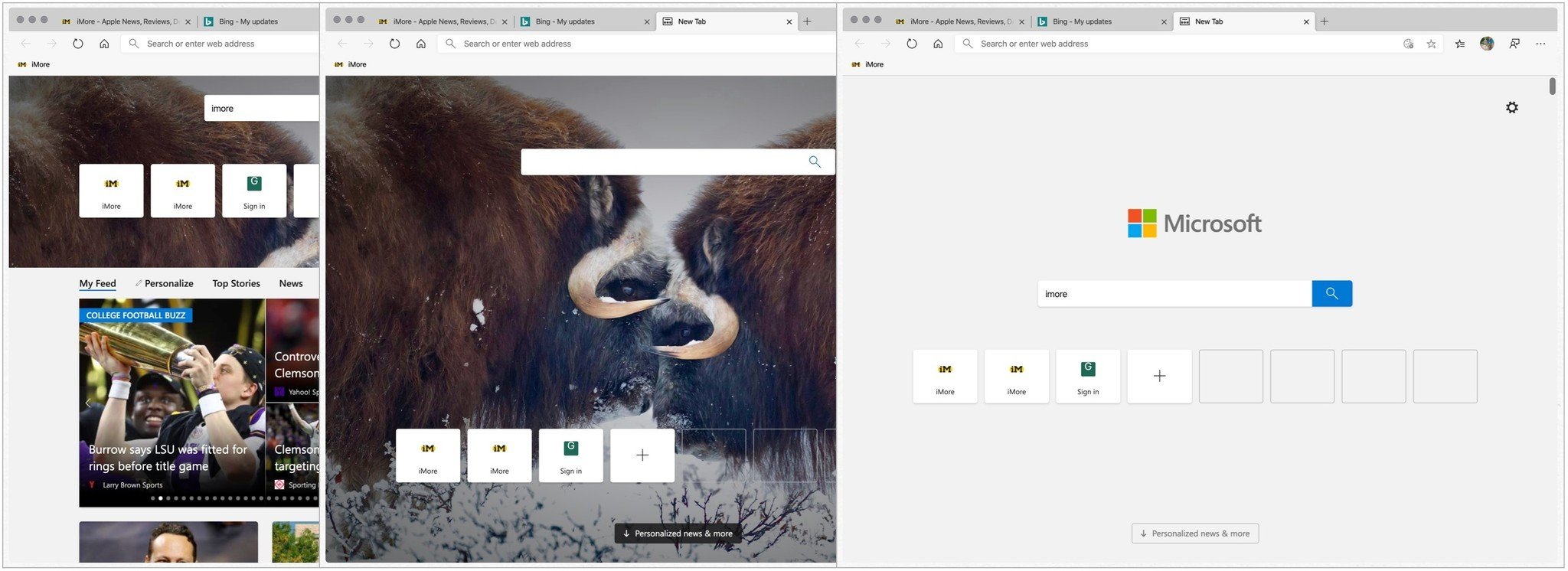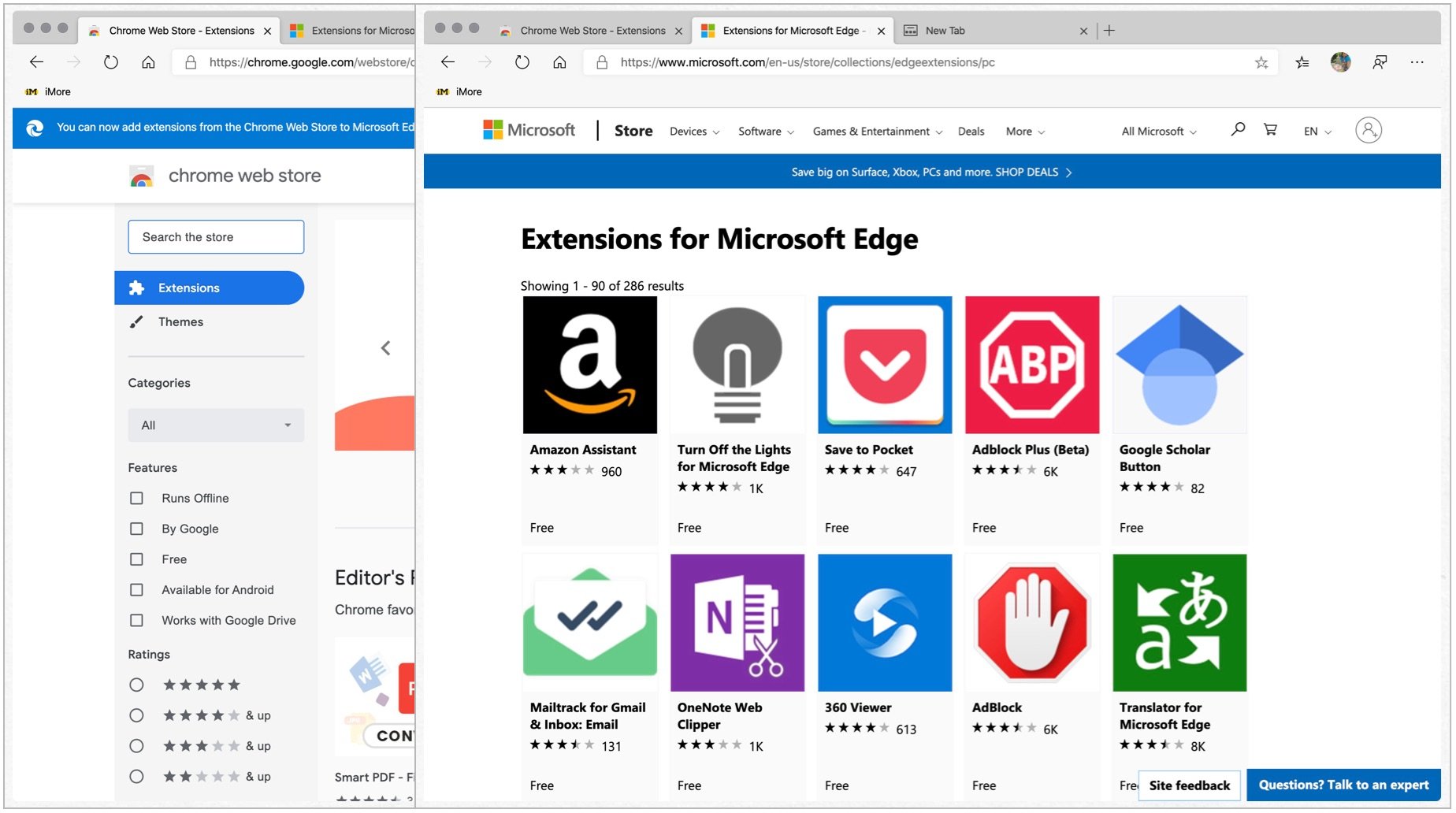iMore Verdict
Price: Free download.Bottom line: Even as an unfinished product, Microsoft Edge is on the right track. Mac users should take it for a test drive and not feel guilty about it.
Pros
- +
Easy setup and import
- +
Robust, flexible security tools
- +
Access to Chromium-based extensions
Cons
- -
No Apple Pay integration
- -
No iCloud password integration
- -
Syncing isn't a finished product
You can always trust iMore.

There's a new browser launching today, January 15, across various platforms including macOS, Windows, iOS, and Android. It's the new version of Microsoft Edge, the company's first browser that's based on the open-source Chromium project, the technology behind the industry-leading Google Chrome.
Since last summer, I've been using the Microsoft Edge public beta on my MacBook Pro alongside Apple Safari, my default browser for nearly two decades. For this okay, boomer, even the thought of ditching an Apple product for one made by Microsoft was like considering an invitation to join the dark side. Nonetheless, flirting with Microsoft Edge turned out to be a positive experience.
With the first Chromium-based Microsoft Edge browser now available to the public, I plan on continuing my Microsoft adventure for various reasons. Still, I'm not ready to ditch Apple Safari either for the reasons noted below.
Packed with features
What is Microsoft Edge?
Originally, I thought the best way to review Microsoft Edge for Mac was to compare it to Apple's Safari. After much thought, I decided against taking this approach, although I do plan on writing a separate article for iMore explaining the key differences between the two browsers. For this review, I'll focus instead on Microsoft Edge's broad features, then unpack its biggest strengths and weaknesses and why you should consider adding it to your Mac.
All about Chromium
Any discussion on Microsoft Edge needs to begin with one about Chromium. This web browser project was originally developed by Google. Like all successful open-source projects, it's been steadily improved by many third-parties, of which Microsoft is only one.
With Chromium, Google has long promised a "lightweight and fast" internet experience. From there, it has largely been left to others to make browser-specific features worth considering.
iMore offers spot-on advice and guidance from our team of experts, with decades of Apple device experience to lean on. Learn more with iMore!
Today, Chromium serves as the starting point for many browsers, not just Microsoft Edge and Google Chrome. These include Amazon Silk, Brave, and many others.
A security and privacy win
Microsoft Edge: What I like
The first Chromium-based version of Microsoft Edge is packed with high-profile features. No doubt, those on the surface will get most of the attention. However, I've been most impressed with what's going on behind the scenes.

Hackers will always target web browsers and I don't expect that will ever change. While nothing is 100 percent secure, Microsoft is doing its part to push its Edge browser closer to absolute security through tracking prevention and a so-called SmartScreen tool.
Tracking prevention
In Microsoft Edge, you get to decide how much free rein web trackers have while you're surfing. The trackers, which collect data about how you interact with a site, includes a mix of good and bad actors. Unfortunately, separating the two isn't always easy. At launch, Microsoft Edge offers three levels of tracking prevention, Basic, Balanced, and Strict.
Under Basic, Microsoft blocks trackers it thinks are potentially harmful, while allowing others that are intended to personalize your web content and ads. The Balanced approach, which Microsoft recommends for most users, blocks harmful trackers and those from sites you haven't visited. The trade-off is you receive a less robust and personalized experience compared to the Basic option.

With Strict tracking, Microsoft blocks harmful trackers and the majority of all trackers across most sites. Under this scenario, your surfing experience becomes even less personalized. Depending on the site, the limit could also disable video and login capabilities.
Like Microsoft, I believe the Balanced approach is optimal for most users. Nonetheless, I'm impressed Microsoft has moved past an all or nothing approach when it comes to tracking. Better still, you can switch back and forth between the three levels at will depending on your circumstances or location.
SmartScreen and Application Guard
Meanwhile, with built-in Microsoft Defender SmartScreen technology, Microsoft Edge can protect you from accidentially visiting locations online previously reported as phishing or malware websites. The tool also sends out an alert if you attempt to download potentially malicious files.
For those in a work environment, Microsoft has given IT professionals even more control over SmartScreen. For businesses, there's also the Application Guard, which is designed to help prevent web-based attacks using hardware isolation.

Looking beyond privacy and security, there's no denying Microsoft has spent a great deal of time during the beta process to create a setup process simple enough for anyone to complete. As part of this, it made it easy to import data from other browsers. Current Apple Safari users, for example, can import favorites, bookmarks, and browsing history, while Google Chrome users also have the ability to import payment and password information, addresses, settings, and more.
As part of the Microsoft Edge setup process, you can also create an informative web page that shows up on new tabs. The page offers a Microsoft Bing web search box, quick links to your most visited web sites, and a full Microsoft News page. You can change the tab page to match one of three canned layouts or make it your own by creating a more customized version. The new page is a nice touch and one of the key reasons to consider making a switch.
Lots of extensions
Another benefit of using the Chromium-backed Microsoft Edge browser is compatibility. Not only can you take advantage of Microsoft's new extension store for Edge, but you can also install content from the Chrome Web Store. The compatibility means you now have access to over 190,000 extensions and web apps. At last count, Safari offers less than 100.

Extensions make a web browser even more useful and offers a great way to further customize the experience. Available extensions include web security tools, translators, password generators, and much more.
iCloud averse, lacking features
Microsoft Edge: What I don't like
The Chromium version of Microsoft Edge arrives with two limitations that could make it a tough sell for users, at least in the short-term.
One of Microsoft Edge's most important features is sync, which keeps your browser history, favorites, passwords, and other data the same across all of your devices. Unfortunately, sync isn't fully supported at launch. No doubt, Microsoft will correct this omission soon, but it's a head-scratching omission from such a high-profile launch.
There's no easy fix to the second limitation, which affects only Apple users. Microsoft Edge, unlike Apple Safari, doesn't support iCloud. Because of this, there's no way to bring over your iCloud Keychain username and passwords to the new browser. You also can't use Apple Pay. Because of the former, I have found it nearly impossible to fully embrace the Microsoft Edge browser and choose it over Apple Safari. However, if you use a third-party password manager such as 1Password, this limitation isn't important.
Beyond these pain points, Microsoft Edge is a nearly perfect browser and I can't wait to see where it goes from here. I'm also excited about trying the refreshed iOS version, available on the App Store.
Speedy, but ...
I'm not the type who puts a lot of weight on software benchmarks because those tests are heavily influenced by hardware. Because of this, I'll leave it to others to fully analyze the performance of Microsoft Edge and compare it to other browsers on the market, including Apple Safari.
With that being said, during my limited tests, I didn't see much of a difference between the two browsers. Like other Chromium-based browsers, Microsoft Edge on Mac is quick. However, it didn't seem any faster or slower than Apple Safari. Your situation could differ depending on the age of your computer, which is certainly worth keeping in mind.
A mostly great product
Microsoft Edge
As 2020 begins, a plurality of Mac users now use Google Chrome as their browser of choice, followed by Apple Safari. In total, the two browsers control 93 percent of the market on macOS. That could soon change thanks to the arrival of Chromium-based Microsoft Edge.
If you're a current Chrome browser user ...
The new browser has been designed with privacy and protection in mind. At the same time, it firmly embraces the third-party integration and speed that has made Chrome the most popular browser on desktops overall.
If you're a current Apple Safari user ...
Thanks to limitations from Apple, Microsoft Edge can't import all content from Safari, such as passwords. However, if you're willing to look past this and want to jump head first into open-source Chromium web browsing, you should give Microsoft Edge a try. Offering perhaps a fresher experience than Safari with more privacy features, the newest browser for Mac is beautifully designed, fun to use, and customizable to match your unique tastes.
Have any questions?
If you have any questions or concerns about the Microsoft Edge web browser, let us know below.

Bryan M. Wolfe has written about technology for over a decade on various websites, including TechRadar, AppAdvice, and many more. Before this, he worked in the technology field across different industries, including healthcare and education. He’s currently iMore’s lead on all things Mac and macOS, although he also loves covering iPhone, iPad, and Apple Watch. Bryan enjoys watching his favorite sports teams, traveling, and driving around his teenage daughter to her latest stage show, audition, or school event in his spare time. He also keeps busy walking his black and white cocker spaniel, Izzy, and trying new coffees and liquid grapes.


